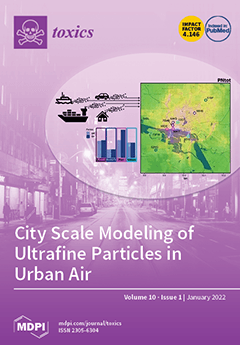Salvia sclarea L. is a Cd
2+ tolerant medicinal herb with antifungal and antimicrobial properties cultivated for its pharmacological properties. However, accumulation of high Cd
2+ content in its tissues increases the adverse health effects of Cd
2+ in humans. Therefore, there is a serious demand to lower human Cd
2+ intake. The purpose of our study was to evaluate the mitigative role of excess Zn
2+ supply to Cd
2+ uptake/translocation and toxicity in clary sage. Salvia plants were treated with excess Cd
2+ (100 μM CdSO
4) alone, and in combination with Zn
2+ (900 μM ZnSO
4), in modified Hoagland nutrient solution. The results demonstrate that
S. sclarea plants exposed to Cd
2+ toxicity accumulated a significant amount of Cd
2+ in their tissues, with higher concentrations in roots than in leaves. Cadmium exposure enhanced total Zn
2+ uptake but also decreased its translocation to leaves. The accumulated Cd
2+ led to a substantial decrease in photosystem II (PSII) photochemistry and disrupted the chloroplast ultrastructure, which coincided with an increased lipid peroxidation. Zinc application decreased Cd
2+ uptake and translocation to leaves, while it mitigated oxidative stress, restoring chloroplast ultrastructure. Excess Zn
2+ ameliorated the adverse effects of Cd
2+ on PSII photochemistry, increasing the fraction of energy used for photochemistry (Φ
PSII) and restoring PSII redox state and maximum PSII efficiency (
Fv/
Fm), while decreasing excess excitation energy at PSII (EXC). We conclude that excess Zn
2+ application eliminated the adverse effects of Cd
2+ toxicity, reducing Cd
2+ uptake and translocation and restoring chloroplast ultrastructure and PSII photochemical efficiency. Thus, excess Zn
2+ application can be used as an important method for low Cd
2+-accumulating crops, limiting Cd
2+ entry into the food chain.
Full article






